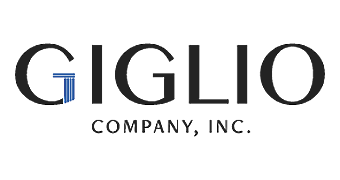There are only two months left in 2023. I know…I can’t believe that either! Many of you will be developing and delivering year-end presentations to clients/customers. STOP! Read this right now and you’ll save a lot of time:
They aren’t as interested as you think they are.
Too often, I see people delivering presentations that assume their audience is as knowledgeable and interested in their topic as they are. But think about it…I bet it won’t take long for you to recall a time when YOU were the audience and the speaker just simply lost you. They spoke with far too much detail about areas of the business that didn’t directly concern you. Remember that time? Good!
As you prepare for your client presentations, you must focus on what’s dear to them, what keeps them up at night, and what you’ve done (and are going to do) to make their lives easier.
They Care…Just Not That Much
Clients hired you for a reason and it’s that reason they care about. But do you know what it is? With my private equity clients, I often find that they’ve forgotten. As a result, their presentations try to cover every aspect of their business to prove how in touch and busy they are. However, if they focused on one simple question in the mind of their client, “Is my money safe?” they would deliver far more powerful messaging.
I had PE client say to me once, “Steve, I don’t need to hear the top executive expound upon every piece of knowledge he has…trying to prove he’s the smartest guy in the room. I only care about if they are doing a good job with my investments.”
Seems simple, right? But so many get it wrong.
Another executive said to me, “They fly me down to some island, put me up in a luxury hotel, put on an elaborate dog-and-pony show, and for what? All I wanted to know is what they could have told me in about 20 minutes in a meeting room.”
Your clients DO care about what you’re doing. But they are specific in what they care about. So, make sure you tell them what they want and need to hear.
They Don’t Live and Breath This Stuff
You are hyper-focused on your industry, your tasks, and your outcomes. However, your clients are not. They have their own enterprise issues that concern them 24/7. The way I see it, most clients have about 20 percent of the knowledge that their agencies/representatives do. Again, using some of my private equity clients as an example…they error by making assumptions about knowledge that their clients don’t actually have.
For example, I once had someone say about their PE representative, “I was so glad that he explained derivatives because I had never really understood how they worked.” I can only imagine how shocked the person delivering the presentation was to learn that his client wasn’t living and breathing derivatives all day!
Understand that your audience is there for a basic understanding of the work you do that is backed by the results you get. How you got those results is of far less interest than the fact that you got them.
Keep It Simple
When developing any presentation, but especially one at year’s end, it’s important you start by knowing what your audience wants to hear and then delivering easy-to-digest messaging that addresses those desires. I recommend my clients start by asking a few questions that will help them pare down their presentations to the few basic, but important, points they want to make:
- Is this essential information that will inspire confidence from my audience?
- Am I inspired to deliver this information?
- Is it clear to me?
- Have I preempted their logical questions?
- How do I want them to feel after the presentation?
- Is my audience smarter and more confident in my firm once I’m done?
Ask yourself these questions before you start your annual presentation development. As you do, you’ll start to put yourself in the shoes of your audience. I bet you will realize that much of what you might have said is not relevant and could risk turning off your client. Pretty much the opposite of what you want to inspire, right?
Take a lesson from the actor Joe Pesci. After winning an Oscar for “Goodfellas” in 1991, he diverted from usual acceptance speeches in which winners thank people whom most of the general public don’t know and he simply said:
“It’s my privilege. Thank you.”
It is widely considered one of the best acceptance speeches of all time!
Watch the video for this post:

